LOWER SCHOOL (PRIMARY DK-2)
Curriculum Guide 2022-2023
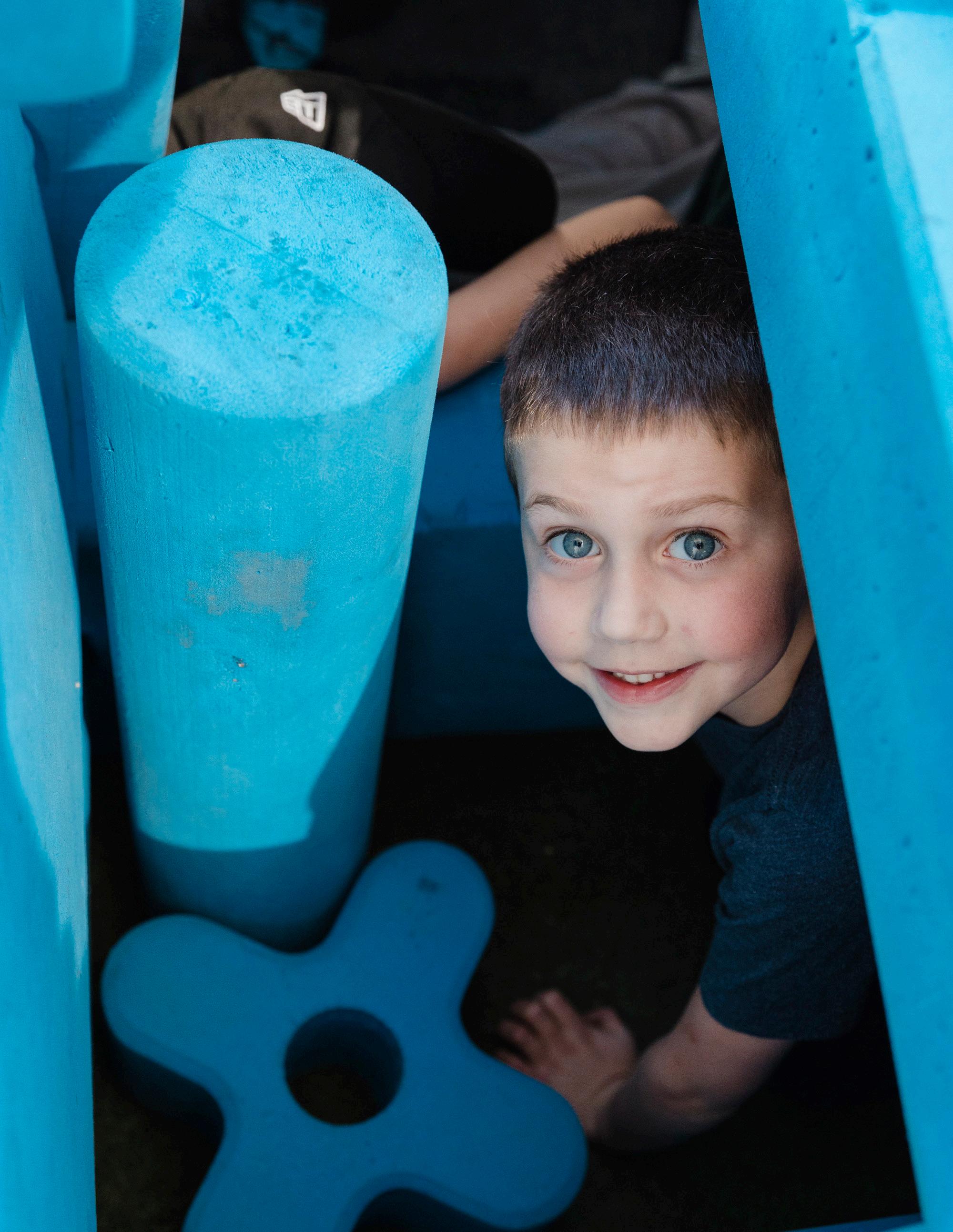
1
Lower School // Primary DK-2 @ The Willows
THE WILLOWS LOWER SCHOOL students grow and learn through the years on a single DK-8 campus in a balanced yet academically challenging, creative environment. We believe, and research supports, that both academic achievement (IQ) and emotional intelligence (EQ) are essential to a student’s education. So, each year of our integrated program is designed to promote both the academic and social-emotional growth of our students.
Our DK-2 students are creative, caring, and curious about the world and their place within it. They become empowered as learners and thinkers in these formative years. Our DK-8 setting provides a distinct advantage that allows our youngest students to interact regularly with older role models as they learn to spread their wings, take risks, and thrive in a safe, nurturing atmosphere.
2
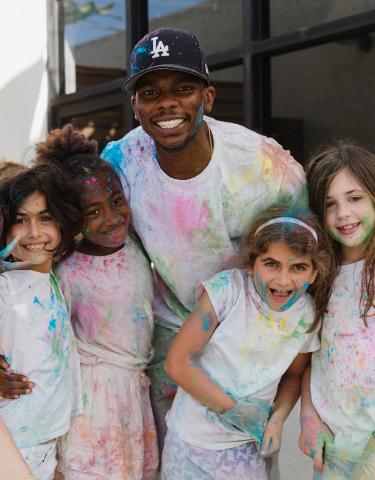
3
Philosophy & Goals
The primary grades are a stimulating and active time, full of thrilling cognitive and social-emotional growth. The years between DK and 2nd grade instill a deep sense of community within our students, as we nurture and support them to explore their innate gifts and share them with others.
Our main academic goal for grades DK-2 is to equip students with the foundational skills they need to be active, engaged, and successful learners who can formulate questions, develop strategies to find solutions, listen critically, communicate clearly, organize materials and ideas, work collaboratively, and seek assistance when needed.
We strongly believe that communication between parents and faculty helps to foster children’s growth. We keep parents aware of Lower School events through newsletters, evaluations, phone calls, emails, and regular updates on our website.
Our hope is that parents feel well-informed about their child’s school experience and increasingly comfortable in their evolving relationship with their child. We appreciate the support of our parents and look forward to developing strong relationships with them.
4
Course Descriptions
LANGUAGE ARTS
The focus of the Language Arts program in grades DK-2nd grade is on developing foundational skills in reading, writing, listening, and speaking. Students read and are read to daily, and receive guidance as they progress from working with individual sounds in words to continuous text in teacher-led book groups. The writing program encourages students to express their ideas and revise and edit writing with teacher guidance. The Language Arts program is designed to help students learn to read and write, in preparation for the work in Upper Elementary where they ultimately read and write to learn.
Beginning in kindergarten, we utilize the Sound Steps to Reading program for phonics instruction, developed by British cognitive psychologist Diane McGuiness. This program is designed to give students a strong foundation in understanding the relationship between sounds and letters in the English language. Beyond phonics, kindergarten through 2nd grade classrooms utilize the Reading and Writing Workshops developed at Teachers College, Columbia University. The goal of these workshops is not simply to create students who read and write, but students who ARE readers and writers. During these workshops, students practice reading texts at their independent level, reading in teacher-guided book groups, writing original pieces, and receiving feedback and guidance from teachers towards producing a clear message. Beginning in DK, we support our youngest writers with lessons and materials developed by Handwriting Without Tears, a developmentally appropriate, multisensory approach to handwriting.
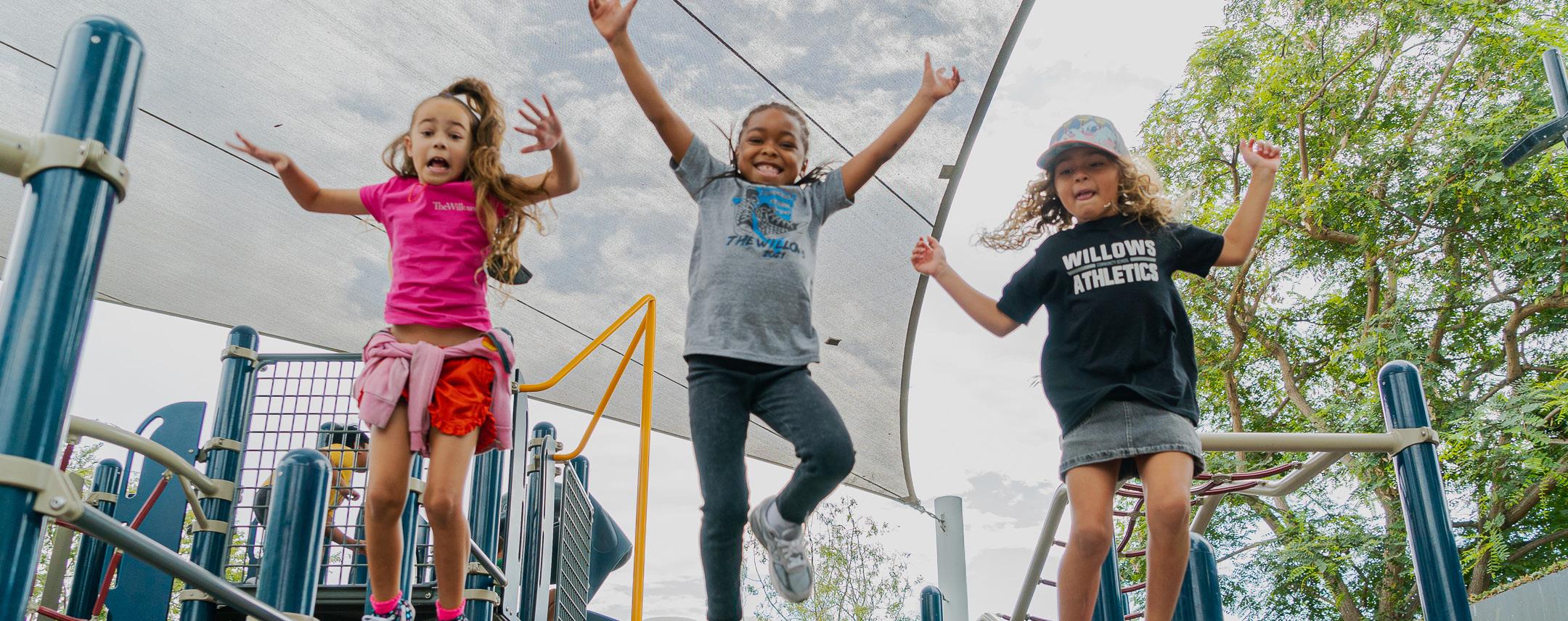
5
The skills listed below are a sampling of some of the main expectations we have for our DK-2 students in reading and writing. Assessments are ongoing, and students acquire skills and proficiency at different rates.
READING
DK K-1 2
• Understands that print has a specific meaning
• Recalls information from stories read aloud in class
• Understands single sound/symbol relationships
• Uses pictures to comprehend text
• Decodes words using knowledge of multiple spellings for same sound
• Retells stories using proper sequence of events
• Recognizes common two-syllable words, and all alternate spellings for common sounds
• Utilizes strategies for comprehending text (prediction, connections, questioning)
WRITING
DK K-1 2
• Practices proper pencil grip
• Uses drawings to tell stories
• Forms upper and lower case letters correctly
• Writes words with three sounds and short vowels
• Utilizes knowledge of sounds and multiple spellings for sounds when writing
• Expresses ideas in 1-4 sentences focused on one topic
• Utilizes common writing conventions (capitalization, punctuation, correct spelling)
• Takes a written piece through all stages of the writing process
6
MATHEMATICS
The focus of the mathematics program in the primary (DK-2) grades is on building a solid foundational understanding of number sense, geometry and measurement, and statistics and probability. Our math curriculum is primarily driven by the University of Chicago’s Everyday Mathematics program, which provides extensive, research-based activities differentiated for a variety of learning styles. Our teachers have also been trained in Cognitively Guided Instruction (CGI), an approach to teaching mathematics that encourages listening to children’s mathematical thinking and using it as a basis for instruction. Our math curriculum encourages young students to explore strategies for building conceptual understanding and solving problems within a supportive community of teachers and peers.

7
The skills listed below are a sampling of some of the main expectations we have for our DK-2 students in mathematics. Assessments are ongoing, and students acquire skills and proficiency at different rates.
NUMBER SENSE
DK K-1
• Counts small collection of objects using one-to-one correspondence
• Uses language to describe quantity and relationship (more, less, equal)
• Recognizes and creates single variable patterns
• Compares and orders numbers to 100
• Groups units into sets of tens, and use combinations of tens and ones to build two-digit numbers
• Solves single-digit addition and subtraction problems
2
• Identifies place value in 2 and 3-digit numbers
• Demonstrates fluency with addition and subtraction facts
• Develops proficiency with addition subtraction with 2-digit numbers, including regrouping
GEOMETRY/MEASUREMENT
DK K-1
• Identifes basic shapes in the environment
• Measures using non-standard units
• Sorts objects by one attribute
• Combines 2-D shapes to form different shapes
• Measures length, width, and height using standard and non-standard units
• Sorts objects by 2 or more attributes
STATISTICS/PROBABILITY
DK K-1
• Contributes data to a pictorial graph
• Reads and interprets simple graphs and charts
• Uses findings from graphs and charts to make predictions
2
• Identifies 3-D shapes and 2-D shapes in different orientations
• Measures length, width, and height using standard units
• Distinguishes between polygons and irregular shapes
2
• Collects data and creates graphs and charts
• Analyzes findings from graphs and charts to draw conclusion
8
SCIENCE
We believe our youngest students come to us with an innate mindset well-suited for scientific pursuits. DK-2 students are inquisitive, imaginative, and natural explorers of the world around them. Our goal with science instruction in the early grades is to support these innate qualities and give young learners the tools and structure to participate in the work of scientists.
The Lower School science curriculum is based on the concepts and skills suggested by state and national standards, and is incorporated into several interdisciplinary thematic units throughout the school year (listed below). Students use the scientific method as they formulate hypotheses, conduct experiments, and form conclusions based on evidence.
Science at The Willows is a hands-on, lab-based experience designed to make concepts accessible, relevant, and engaging. Teachers encourage children to ask questions, record observations, and draw their own conclusions. Hands-on units give students the opportunity to learn about the world around them and to begin to learn the language of science. Field Trips are integrated into the units of study.
THEMATIC UNITS
DK K 1 2
• Penguins
• Sink and Float
• Human Body
• Animals
• Homes and Garden
• Forests and Insects*
• Everyday Encounters
• The Oceans*
• Overnight Field Trip to Long Beach Aquarium
*topics are on-going throughout the school year
Our science goals for DK and kindergarten students include:
• Recording predictions with drawings
• Following simple steps to complete experiments
• Recording simple, informal observations with drawings
• Using information gathered during observations to draw conclusions
Our science goals for first and second grade include:
• Recording predictions with drawings
• Following simple steps to complete experiments
• Recording simple, informal observations with drawings
• Using information gathered during observations to draw conclusions and ask new questions
• Using scientific tools to gather information (microscopes, magnifying glasses, ProScopes)
9

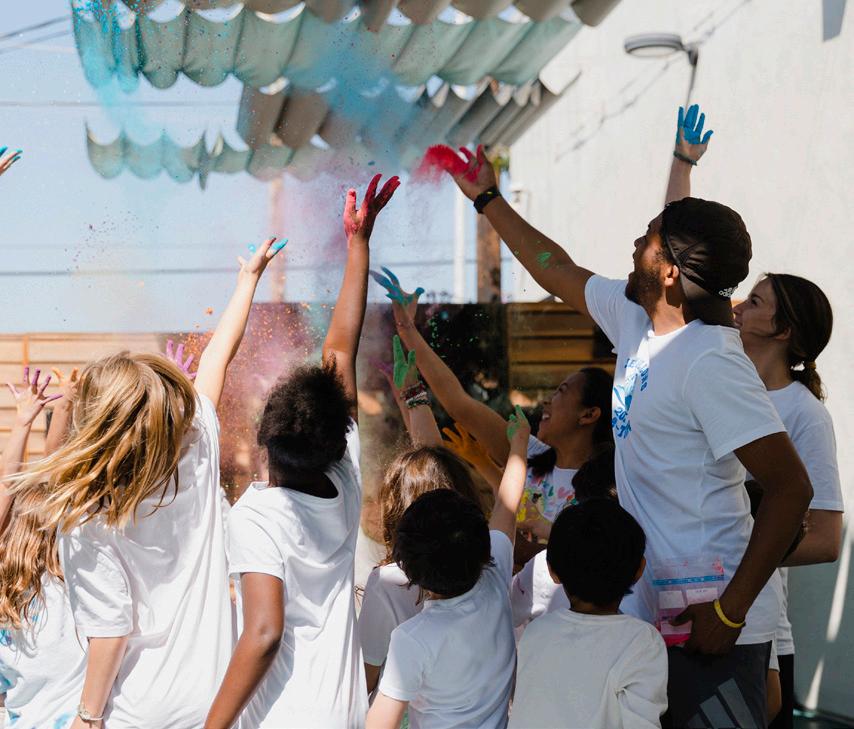
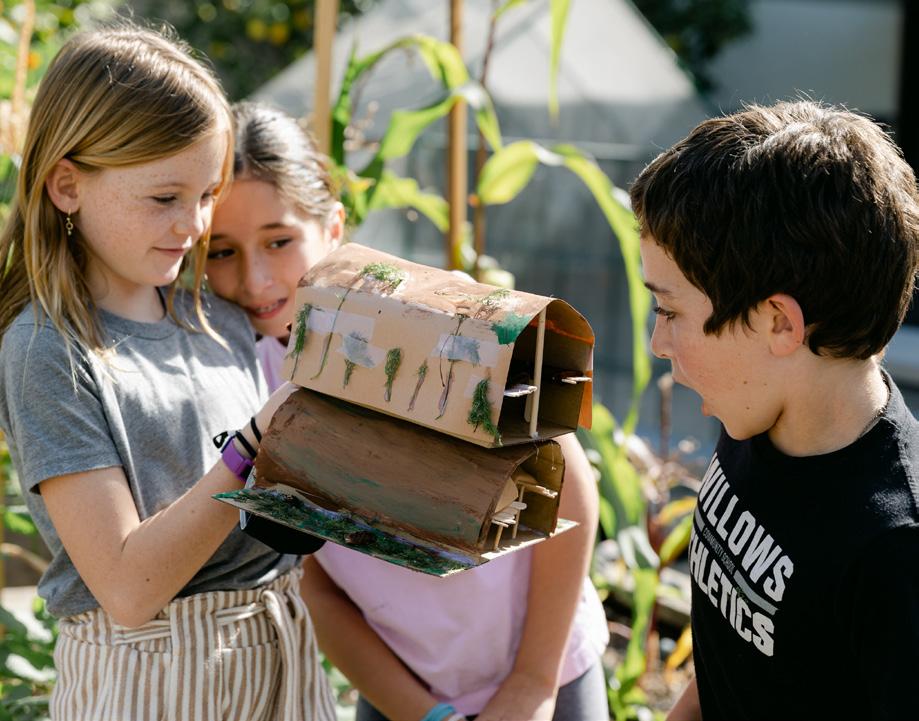

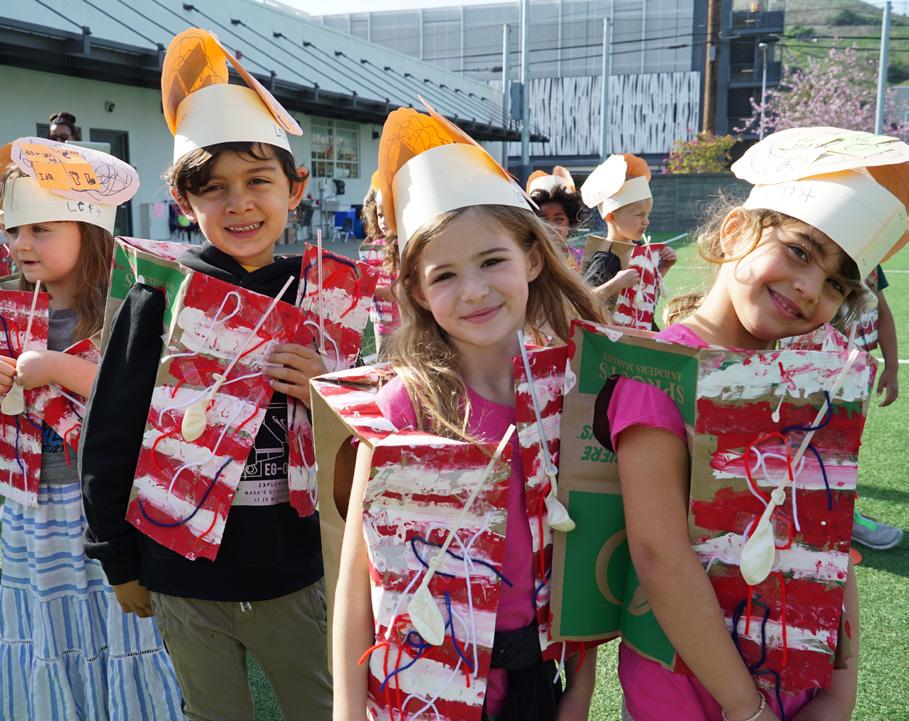
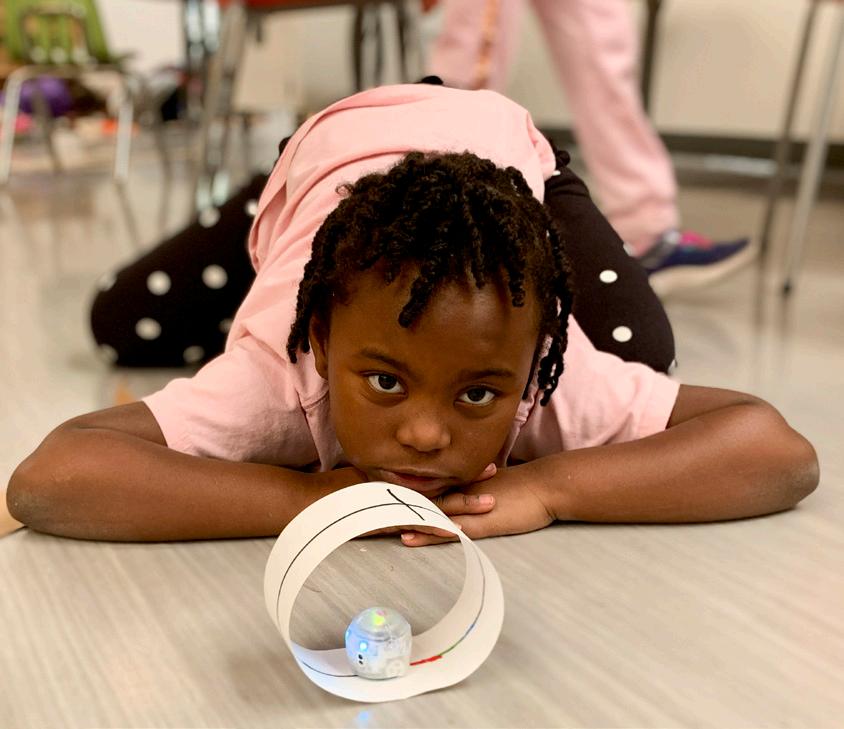
10
SOCIAL STUDIES
In the primary grades, our social studies curriculum builds off of the strong overall focus on community at The Willows. Our youngest students explore what it means to be a part of our school community, and learn about how this relates to being a citizen of larger communities like our city, our country, and our world.
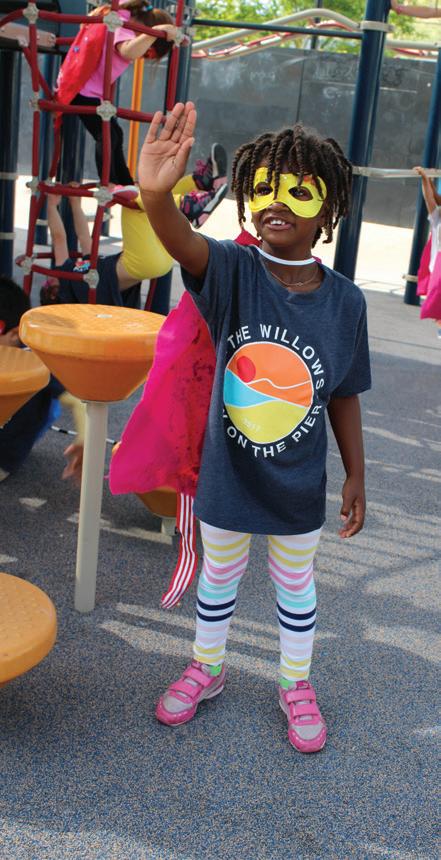
The Lower School social studies curriculum is based on the concepts and skills suggested by state and national standards, and, like science instruction, is incorporated into several interdisciplinary thematic units throughout the school year (listed below). Field trips are integrated into units of study.
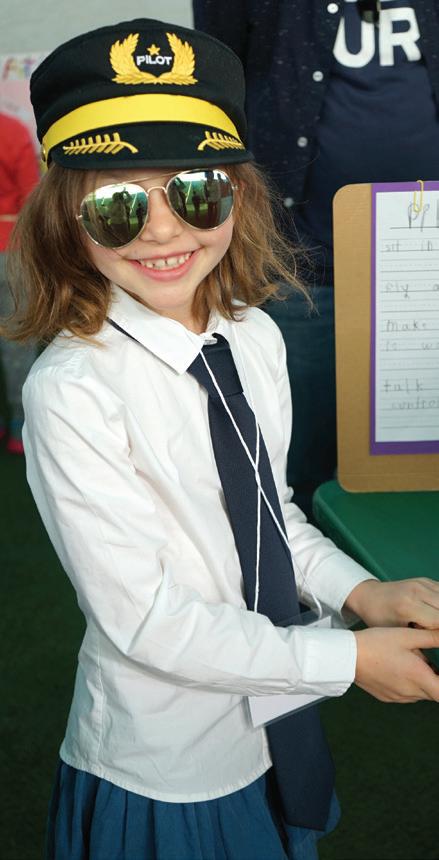
In order to strengthen connections to the values of our local communities and engage students in the concepts of the curriculum on a deeper level, each grade level participates in a community service project in partnership with a local service organization.

THEMATIC
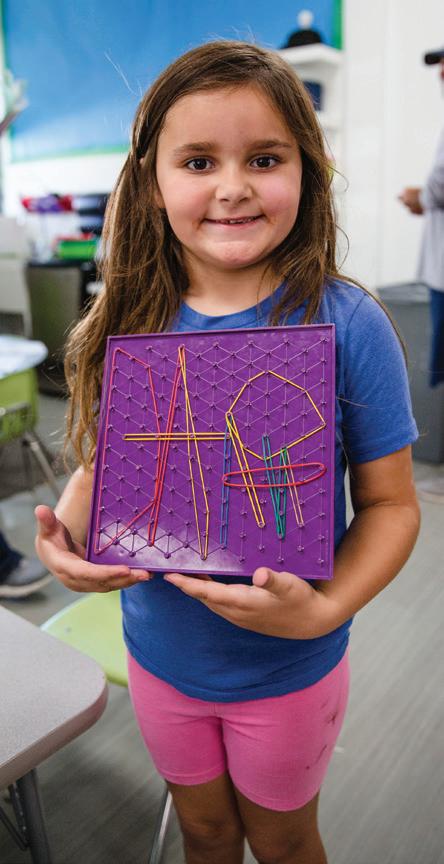
11
UNITS DK K 1 2 • All About Each Other and Ourselves • Penguins • Superheroes • Homes • The Body • Animals • Occupations • World Cultures • Eminent People
STEAM2 // MAKER AND TECHNOLOGY
Shane Dooley, Brent Weiss, Willows Faculty
At The Willows, we have long embraced technology as a tool for learning, promoting the idea that students use technology to be more creators than consumers. Further, our interdisciplinary, project-based approach has long valued integrating technology into all disciplines and classrooms, not keeping it isolated in a computer lab which students only visit occasionally.
Inspired by the design thinking work from Stanford’s d.school as well as our ongoing work with maker and our maker spaces on campus, we believe our approach to interdisciplinary learning can best be summarized as STEAM2 incorporating Science, Technology, Engineering, Art, Math, and Maker into a myriad of projects and schoolwide efforts.
The Willows has a 1:1 device program schoolwide. We are 1:1 iPad DK-2 and 1:1 laptops 3-8, and a variety of other technology-related tools are available in classrooms and in shared maker spaces, including:
• iPads and laptops
• digital cameras
• 3D printers and pens
A sampling of schoolwide focus areas includes:
• Robotics: Bee Bots, Blue Bots, Cubelets, Ozobots, Cubetto, Finch, Hummingbird, Lego, micro:bit, and more
• Engineering using a variety of reusable and consumable materials
• Smart Cutting machine and laster cutter
• green screen, tripods, and other accessories for movie creation
• Programming and coding
• Digital art, animation, and movie creation
• Circuitry
• Safe use of tools and resources within makerLabs
• Woodworking
SAMPLE INTERDISCIPLINARY PROJECTS // SKILLS DEVELOPED
DK K 1 2
PENGUINS: create various models of penguins using a variety of art mediums and techniques
• fine motor
• identification of characteristics and habitats of different penguins
ANIMALS: building animals and diverse animal “habitats” using recyclable materials, craft consumables, and natural resources (rocks, sand)
• fine motor
• classification
• geography
• identification of animal anatomy and adaptations
RAINFOREST: prototype and create rainforest animal habitats; create multi-layered mural representing layers of the rainforest using consumable and recyclable materials
• fine motor
• spatial awareness
• sequential order
• identification of effects of climate and light on plant and animal life
BIOLUMINESCENT
OCEAN CREATURES: create felt versions of ocean animals that live in the deep ocean with simple circuits that power LED lights
• sewing
• simple circuit creation
• identification of ocean animal anatomy and adaptations
12
BeeBots // DK-2

BeeBots, Lightbot Hour, as well as BlueBots, introduce our youngest students to the basics of programming as a written language. They begin basic programming (forward, backward, turn right or left) in developmental kindergarten or kindergarten by entering a series of commands and pressing a button to execute the program going from point to point. They plan, revise, and execute. Next, they navigate mazes and learn to solve challenges.

Scratch // 2-8
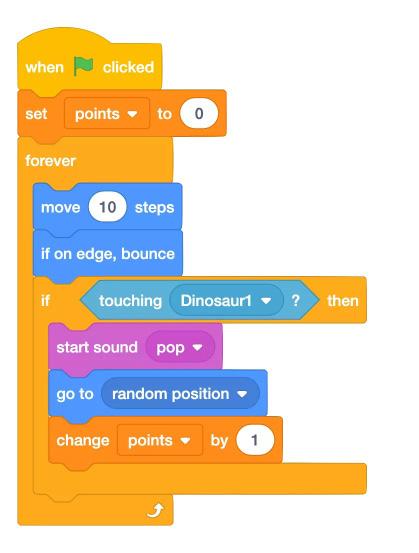
Scratch is a programming environment used by millions of users worldwide to create interactive stories, games, and animations. Teachers use Scratch to help students design creative curricular projects, build computational thinking skills, and connect various STEAM disciplines into what they create. For example, 2nd graders have used Scratch to create interactive ocean environments as part of their yearlong oceans exploration.

13
ROBOTICS CONTINUUM
Lego Spike Prime // 5-8
The Lego Spike Prime offers our students a snap-together robotics system to work as engineers designing from the ground up and programming using block-based coding. Students build, program, command, and control the robots to travel in straight lines, make turns, and pick up blocks. Students think creatively and reason systematically as they use Spike Primes. The Middle School Robotics Team builds and programs the Spike Prime robots to autonomously complete tasks during competitions.
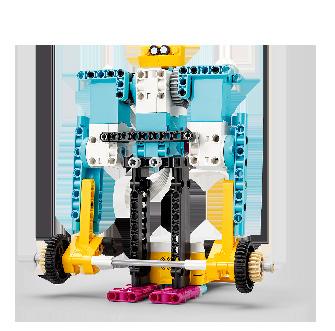
Hummingbird:bit // 5-8
Students use micro:bit with Hummingbird robotics kits and Snap! programming language to create a robot that would interact with its environment using sensors, motors, and lights. For example, one group created a light up sign to let you know if a classroom was occupied or empty so as not to interrupt a class.

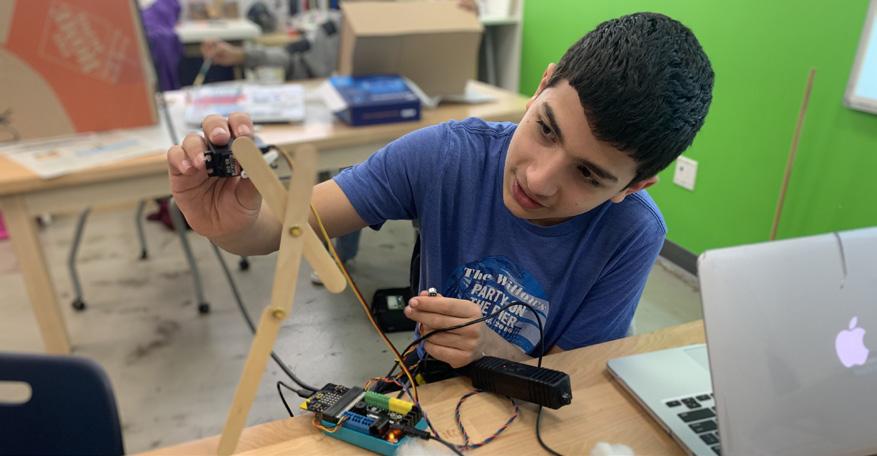
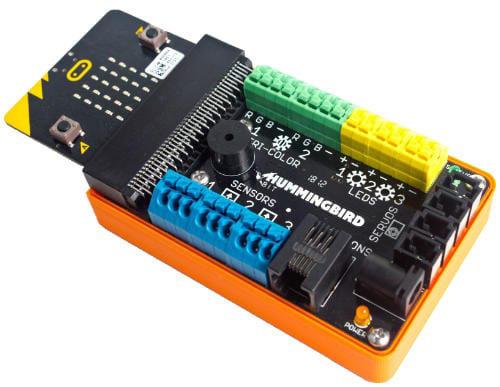
14
LOWER ELEMENTARY MUSIC PROGRAM
Ben Salk, Rina Schloss
Each Willows student is a musician. We want every student to develop the basic skills to make and enjoy music. A wide variety of opportunities are offered to accomplish this goal ranging from singing and playing to understanding and creating to appreciating and performing.
Music Class - A vibrant, Mini “Orffestra”
Starting in developmental kindergarten, we immerse students in an experiential, collaborative, and multicultural musical adventure. Students get to explore how to express themselves, tell stories, actively listen, and be a part of an ensemble through singing, dance, poetry, chants, body percussion, and creative movement. This encourages them to become expressive musicians who listen and compose thoughtfully and improvise freely in song, movement, and instrument playing.
We use the Orff-Schulwerk approach as a foundation for our music curriculum, allowing students to participate fully in the musical experience as they learn to listen and play individually and as an ensemble. With Orff instruments (xylophones, metallophones, glockenspiels), drums, and other percussion instruments in hand, our students build foundational music skills. As students progress through the grades, their level of sophistication in musical skill and theoretical understanding increases.

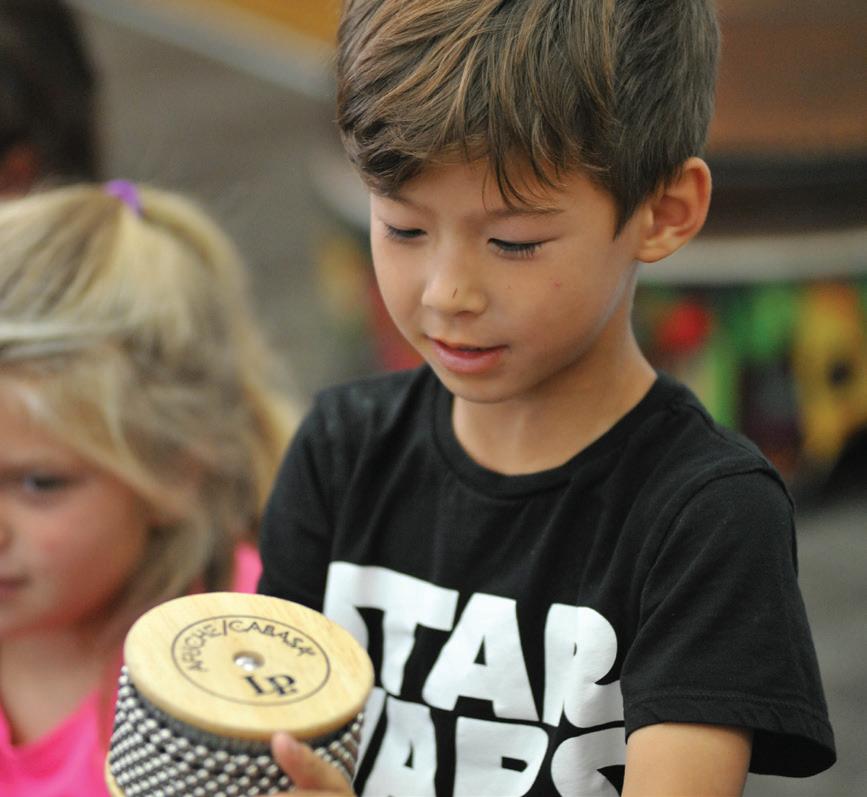
Choir
Our outstanding choral program includes five choirs spanning kindergarten through eighth grade. The Willows Primary Choir is open to students in kindergarten through 2nd grade. Performing with a choir allows our students to sing with a large group and share their work with an audience. While the Primary Choir experience focuses on developing the singing voice, it also extends students’ musicianship skills as they encounter a wide variety of musical styles and learn to sing with others. The choir performs a Winter Concert and Spring Concert each year.
15
VISUAL ART
Kristy Acero, Christian Isbell
Our visual art classes aim to develop understanding and enjoyment of art, and to encourage students to observe, record, and wonder about the world around them. Art is a way to process thinking about our world. Students discover techniques and skills to express themselves visually. Projects often connect with other areas of the curriculum and we begin this year exploring the school-wide theme of “Impact.” We aim to develop students’ visual literacy through on-going discussion about their own work and that of others. Visiting art galleries and museums incorporates first-hand study of artwork from different cultures and time periods. A wide range of media is explored including painting, drawing, textiles, digital media, ceramics, sculpture, printmaking, and photography. We place as much emphasis on the artistic and creative process as the final product. Whether working collaboratively or individually, our goal is to empower students to see, to feel, and to create.
DRAMA
Willows Faculty
Drama is an art form through which students develop awareness and empathy, heighten their perception and cognition, learn to manipulate language and movement, and improve their ability to function comfortably in front of others. Designed to spark the imagination and recognize each child’s creative voice, Lower Elementary creative dramatics, presentation, and performance opportunities are integrated into classroom curriculum.
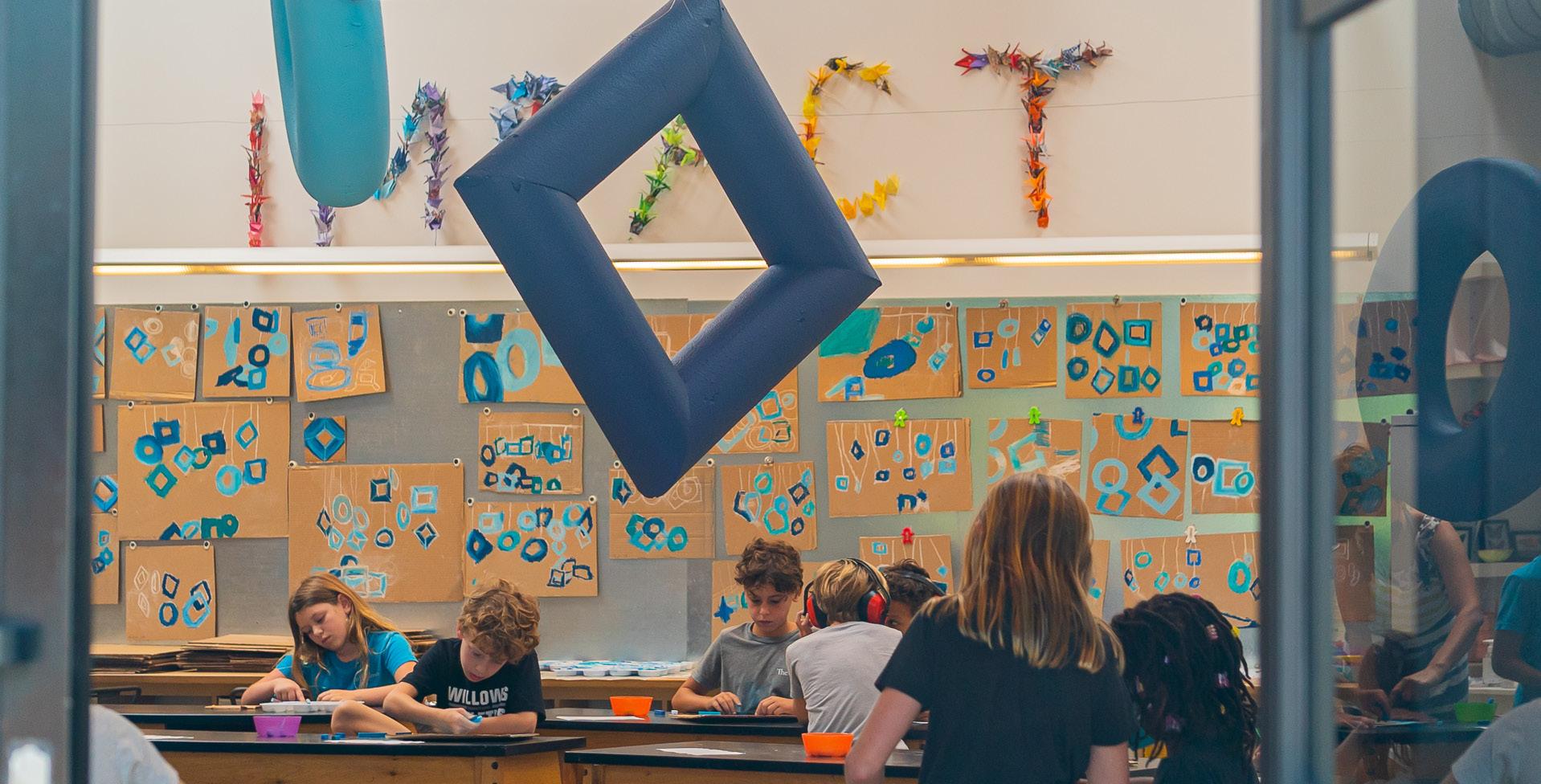
16

17
POETRY
Deb Studebaker, Willows Faculty
Poetry is a playful, interactive experience for our youngest Willows students! For five weeks in the fall, students learn to connect feelings and memories with language and images. Word games ignite ideas and invite sharing; developmental movement primes the brain for learning.
In developmental kindergarten and kindergarten, poetry is about making word pictures that capture the imagina tion. Students listen to poems and then create their own visual/verbal responses. Deb and Kristy develop a magical art project to accompany the students’ final poems.
In 1st and 2nd grades, students really begin to see themselves as poets. Children use their senses to observe, imagine, remember, and compare one thing to another. They proudly share their work in class, and receive individual feedback when it comes time to focus on word choice and editing.
Classroom teachers encourage students to read and write poetry after this unit is complete, and every child has one poem published in the school poetry anthology.
Students also participate in Poetry Night, a beloved Willows tradition. Beginning in kindergarten, each grade-level performs on stage, and then students return to their specially decorated classrooms to read individual poems and celebrate their success!
18
ORGANIC GARDENING Willows Faculty
The Willows Gardening program takes our students on a journey from seed to table and beyond. The program augments our science curriculum and enhances our students’ experience with the natural environment and the cycle of life. The organic curriculum is as much about learning to grow vegetables such as broccoli, carrots, chard, beets, peas, lettuce, and kale as it is about providing students with a deep connection to understanding where their food comes from and an awareness of the impact each of us has on our planet’s resources.
Goals of the program are to leave children with the magic and thrill of the natural world, teaching them that there is so much happening underneath the surface and when we care for that, the possibilities are endless.
The gardening curriculum, taught in a developmentally appropriate way for developmental kindergarten through fifth grade, is most definitely experiential with our students getting their hands dirty and tasting the delicious vegetables, fruits and herbs the garden produces. It includes the study of planting and caring for seedlings, sowing and harvesting, seed saving, seed starting, germination, worm farms, composting, beneficial bugs, garden pests, companion planting, pollination, edible flowers, life cycles of plants and trees, evergreen and deciduous trees, and crop rotation. In addition, students learn about different cultures and foods grown and eaten in different parts of the world.
Walk by our garden during a class and you are also sure to see students measuring or drawing pictures. This documentation of the garden is an integral part of the gardening curriculum, which teaches the life cycle of plants and trees. Students map and measure the garden throughout the year in developmentally appropriate ways for each grade level. They draw the garden in fall, winter, and then in spring when the plants are in full bloom to see a full growth cycle.
The garden also illustrates the integration of our classroom curriculum. For example, students in first grade connect composting and vermiculture with their study of the forest floor, and fourth graders use indoor grow boxes to model gardening in space. These hands-on connections to the garden enhance students’ understanding of their units of study and engage them to, literally, dig deeper.
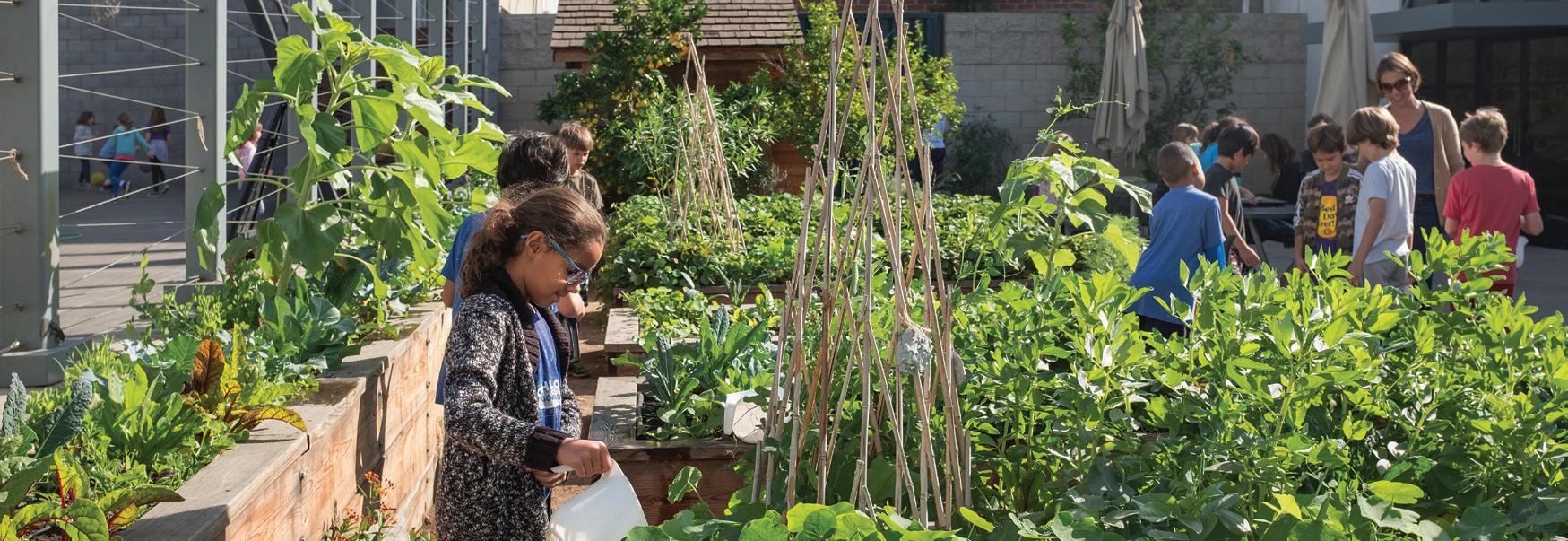
19
Students in the gardening program grow, weed, harvest, and cook their way through each year, helping students see the full picture of seed to table. By tending and nurturing the garden, and taking a seed and helping it grow, a student can see what is possible for all of us.
PHYSICAL EDUCATION
Braulio Archer, Rahim Muhammad, Samantha Potter, Marc Weiss
The Physical Education Program at The Willows is designed to develop and strengthen students’ athletic skills while promoting self-confidence, sportsmanship, and a healthy lifestyle. Students participate in P.E. classes, receiving a combination of whole group, small group, and individual instruction to best meet each individual’s needs.
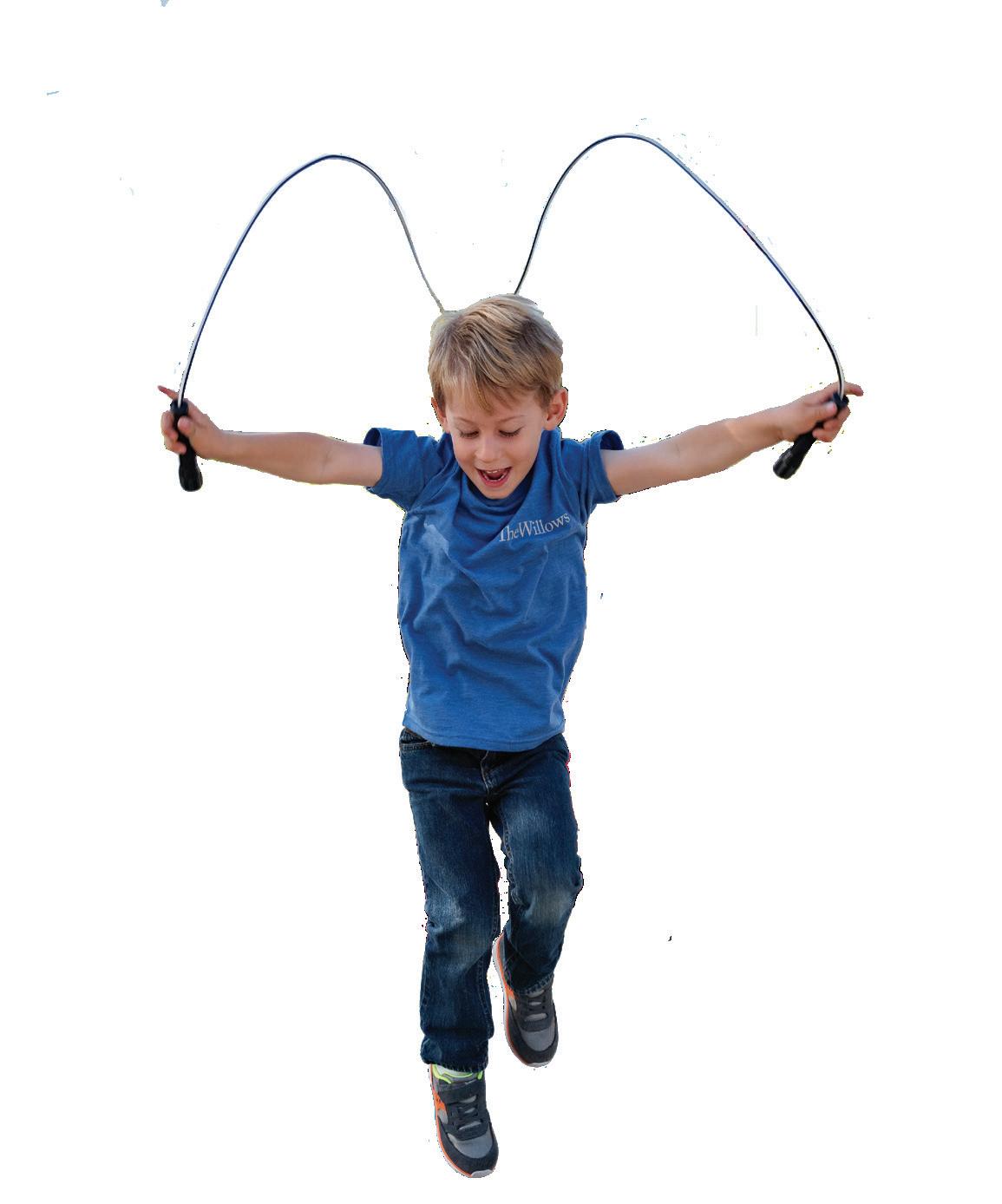
Throughout the year, students participate in activities that strengthen motor skills and foster team spirit. We emphasize the importance of personal health and encourage students to focus on lifetime activity skills. Our goal is for students to develop both skill and confidence–important tools that students need to remain physically active and healthy throughout their lives.
In developmental kindergarten through second grade, the focus during P.E. classes is on learning about one’s body through various fun and non-competitive games. Students develop a range of loco-motor and non-loco-motor skills that help increase foot and hand-eye coordination. Throughout the year, the curriculum is balanced between movement concepts (jumping, hopping, running, balancing) and manipulative skills. After skills are introduced, children practice and repeat the skills in isolation and later incorporate the skills into cooperative games. Sportsmanship and cooperation are constant themes in every class.
20
LIBRARY
Kate Rao, Stephanie Vahedi
Our Library is at the heart of our campus, a hub for collaborative and cross-disciplinary learning. With more than 27,000 resources including books, playaways, on-line audio books, ebooks, e-readers, and online databases, the library program is sequentially integrated with each grade level’s curriculum.
Children in developmental kindergarten visit the library once each week for read-alouds and hands-on activities. Children begin to learn about the parts of the library and some basic library terms (author, illustrator), and the check-out system.

Our library goals for DK students include:
• Beginning to understand library policies, checkout, and organization
• Using a browsing card
• Noticing the difference between fiction and nonfiction
• Learning to enjoy books
Kindergarten students visit the library once each week for read-alouds and hands-on activities. Children begin to learn about the library’s organization systems and select books to check out for one week. They also begin to learn about the research process.
Our library goals for kindergarten students include:
• Understanding the difference between fiction and nonfiction
• Beginning to understand the idea of genre
• Understanding how to make good personal book choices
• Using a browsing card
• Beginning to develop research questions
First and second graders visit the library once each week for activities that build understanding of the library’s organization systems and information literacy. Students begin to learn about the research process, often with projects that connect to their classroom explorations such as the rainforest in first grade, oceans and eminent people
21
in second grade, and other topics.
Our library goals for 1st and 2nd graders include:
• Identifying parts of a book
• Knowing how to use an index
• Understanding the organizational system of the library
• Knowing the difference between fiction and nonfiction
• Identifying favorite genres
• Beginning to use the library catalog browser
• Beginning to develop good research questions
• Understanding how to use library databases to find information
• Creating basic citations
• Beginning to know how to search for answers for personal learning using library databases and other library resources
DEVELOPING EMOTIONAL INTELLIGENCE AT THE WILLOWS
THE YALE CENTER FOR EMOTIONAL INTELLIGENCE RULER APPROACH
We are excited to continue our implementation of the RULER program, an evidence-based approach to social and emotional learning from the Yale Center for Emotional Intelligence, that helps school communities integrate the teaching of emotional intelligence into daily life. RULER teaches five key emotional intelligence skills:
R ecognizing emotions in ones and others
U nderstanding the causes and consequences of emotions
L abeling emotions with a nuanced vocabulary
E xpressing emotions in accordance with cultural norms and social context
R egulating emotions with helpful strategies
RULER integrates these skills into the academic curriculum and provides opportunities for students and all the key adults involved in their education – teachers, administrators, and family members – to learn and apply these skills.
Decades of research shows that emotional intelligence is essential to effective teaching and learning, sound decision making, physical and mental health, and success in school and beyond. Research also shows that when schools and homes partner to support children’s emotional development, children not only feel better, but they do better.
DK-2nd grade classrooms begin the school year by creating and signing a class charter that focuses on how students want to feel, what needs to happen for those feelings to be consistently present, and guidelines for handling uncomfortable feelings and conflict. This helps set a foundation for creating and sustaining a positive learning environment. Throughout the year students will use other RULER tools such as the Mood Meter, Meta-Moment, and Blueprint to further their understanding of their emotions and how to best manage them.
22
In addition, students will explore the RULER Feeling Words Curriculum this year. The goal of the Feeling Words Curriculum is to integrate increasingly nuanced and sophisticated emotional vocabulary into existing academic curriculum. Activities will include analysis of academic materials and current events, self-reflection, discussions, activities, and family interactions. This is an important part of our integrated approach to curriculum, as well as our commitment to continuing to foster, nurture, and grow our emotional intelligence.
We partner with our parents, continually sharing RULER resources and workshops, to help parents practice the skills of emotional intelligence at home and learn about how it’s being implemented in the classroom. We’re proud to be a school community who understands that “emotions matter” and that how children feel has profound implications for learning, success, and wellbeing. Our goal is to equip The Willows children for success today, and for life.
SCHOOL-WIDE THEME
Each school year since 2000-2001, our faculty and students come together across grade levels to explore a school-wide theme. Launched each fall, the annual theme is incorporated into curriculum through classroom projects, the arts, and athletics. Impact is the 2022-2023 school-wide theme.
INTERSESSION
Cross-curricular connections and flexibility are key components of a Willows education. Intersession is a one-week, inter-disciplinary, multi-age exploration of a single topic. Intersession provides an opportunity to explore a new thematic idea throughout the Lower School. The theme is applied to the central academic subjects. This year’s intersession topic is our school-wide theme, Impact, which will provide a rich basis for studies.
ASSESSMENT
The purpose of assessment at The Willows is twofold: to determine whether individual students are developing and mastering grade level skills at an age appropriate pace, and to identify ways our curriculum can be refined or differentiated to best meet our students’ needs.
Rather than judging student progress only through standardized or traditional tests, teachers work closely with administrators to track student learning through a thoughtful combination of quantitative assessments such as short and long-answer tests, qualitative tools like personal reflections and written responses, project-based presentations, portfolios, classroom observations, and one-on-one oral and written evaluations.
The results of these comprehensive assessments are communicated to parents in a variety of ways. Parent-teacher conferences are held in November, March, and June, and written evaluations are sent home before the first and final conferences. Each evaluation is comprised of several descriptive narratives on core subjects as well as social-emotional observations.
Additionally, we believe that students play an important role in communicating information about their learning and growth. To this end, students lead yearly Exhibitions, where they have an opportunity to share projects with the school community, with an emphasis on process and making learning visible to others.
23
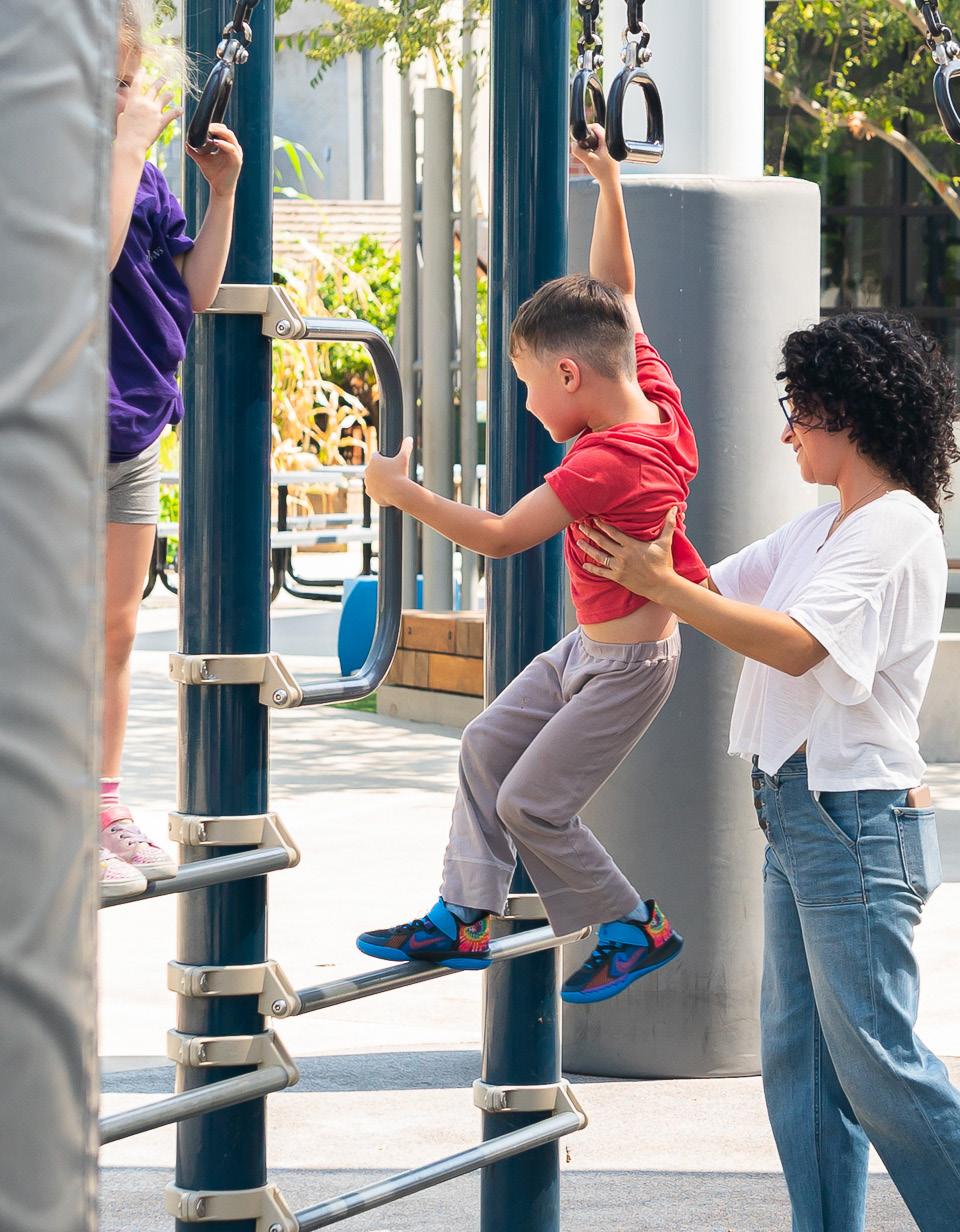
24

25
THE WILLOWS MISSION STATEMENT
At The Willows, we believe each child brings our community an extraordinary gift: a curious mind, ready to explore and eager to learn. Our mission is to grow that gift by challenging our students to uncover meaning and significance in the world around them and to become capable, confident individuals who demonstrate character, engagement, and a joyful passion for creative inquiry across a lifetime.
26
“Our campus is child-centered and devoted to creative and critical inquiry and growth. Direct hands-on experience cements learning and transforms education into a joyful experience.”
–Lisa Rosenstein, Head of School
